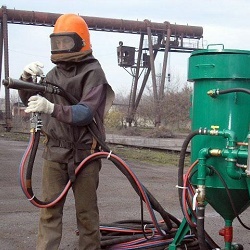Rules for operating the snowthrower
Proper operation and maintenance of the snowthrower are a prerequisite for its efficient operation and long service life. When buying a new equipment, first of all you should familiarize yourself with the operating instructions and prepare for the first use, only after that you can get to work.
Content
How does the snowthrower work?
For proper operation, as well as understanding how to maintain the equipment, you need to at least understand in general termswhat made a snow blower. The main and most expensive part is engine. It is electric or gasoline. The first option does not require special attention, so in this article we will focus on options for liquid fuel.
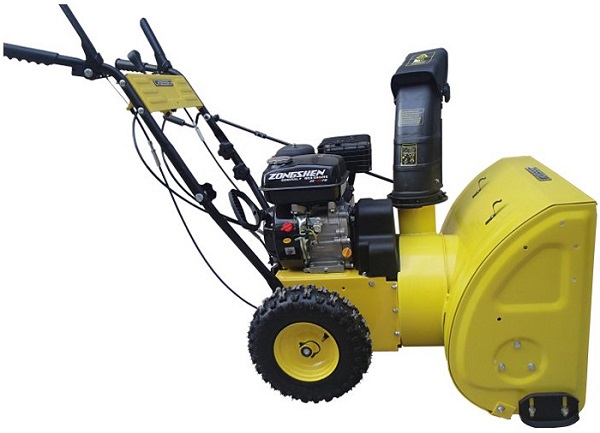
All snow blowers are divided into two types - self-propelled and non-self-propelled. The first option, as the name implies, has a system that ensures its movement. The second option is moved directly by pushing it by the operator.
The second important element is screw. It is he who collects the snow and throws it aside with the help of a special pipe. The screw can be metal with shear bolts or plastic. The advantage of a metal auger is that if a bolt breaks, the bolts simply change to new ones. They cost, as a rule, not expensive. The second option itself is cheaper, but in the event of a breakdown, the entire auger changes.
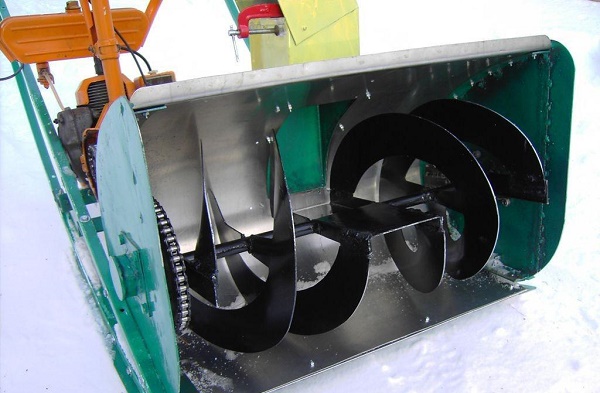
The principle of the snowthrower is very simple: the engine drives the auger, which rakes the snow and throws it aside. In fact, the work of the snowthrower is to lift the snow from the surface to be cleaned and throw it in a powerful stream to the side where it will not interfere.
Preparation of equipment for work
Immediately after purchase, the device must be prepared for operation. This happens in several stages:
- instruction is being studied;
- an external examination of the product;
- oil is checked and gasoline is poured;
- direct launch is underway.
There is no point in talking about the necessity and importance of studying instructions. This is an obvious measure that many love to neglect. In order for the equipment to serve for a long time, it is recommended to study the manual from the manufacturer. Among other things, there will be given information about suitable oil and gasoline, as well as the safety measures at work.
External inspection of the product allows you to assess the state of technology and detect obvious damage. First of all it concerns wires and cables: all of them must be intact and not bent. In addition, it would not be superfluous to check the strength of all bolts and nuts. If somewhere something is tightened not tight enough, then it should be corrected.
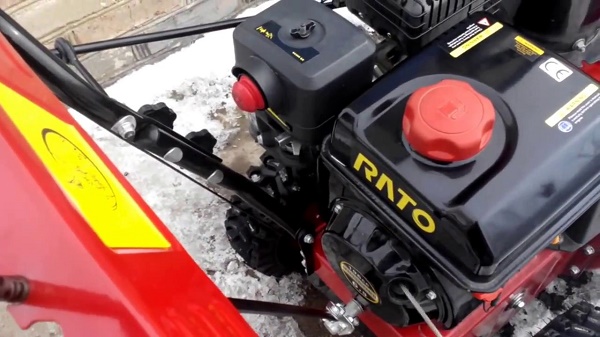
The next stage is assembly of equipment. In some cases, individual components can be removed and during assembly it is important to act in accordance with the instructions, as otherwise serious damage may occur during the first start-up.
Next you need pour oil into gearbox. In some cases this happens at the factory. To check you need to open the drain hole. If nothing flows, then you need to make sure that it is not clogged, and then pour fresh oil. It must have certain properties and be suitable for this type of technology. It is very important that the oil is suitable for operation in low temperature conditions.
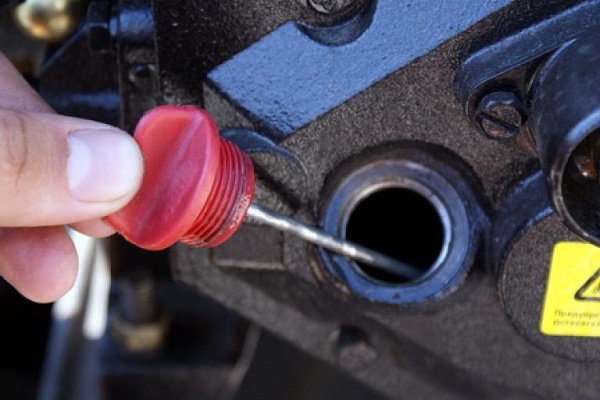
After checking the gearbox, you can go to the auger. Here you should check all the bolts on the side bearings, as well as those that secure the auger shaft. If they have no slits, they are not shear. In this case, the bolts need to be changed, otherwise the entire auger will deteriorate if solid objects hit. The auger itself must be removed - this is necessary for grease shaft and bearings oil This will not only reduce friction and extend the life of these elements, but also increase the range of snow ejection due to a smoother rotation of the auger.
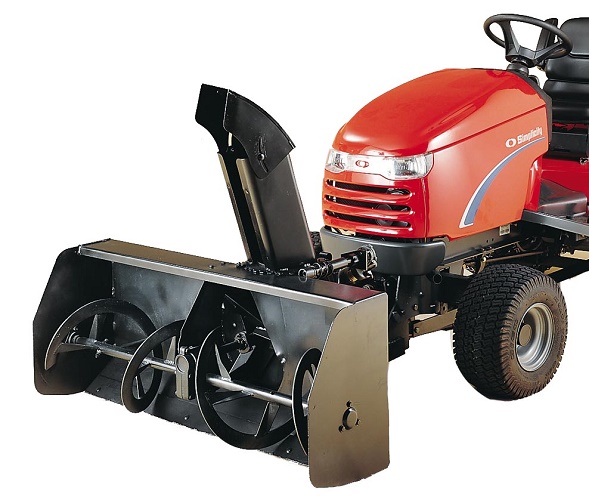
Engine maintenance and first start
At the first commissioning of the engine is necessary pour gasoline and oil. If the oil is from the factory, then it is not necessary to drain it, but after five hours of work, you need to fill in a new one. After that, you should check the cable of the manual starter: it should rotate easily and not jam.
To check the performance of the engine you need to measure the compression: its normal value is from 9 to 12 atmospheres. At the first start-up, the smallest possible value, the reason for which can be the not ground piston rings. The problem should go away by itself after 5 hours of work, if this did not happen, then there is a defect in the motor, and it is best to return the equipment immediately under warranty. Low compression indicates that the engine is not capable of delivering full power.
In order to start the snow blower for the first time, you need to carry out a series of sequential actions.
- The fuel is pumped using a special button.
- The mode switch must be set to on (on).
- The carburetor lever for fuel supply must be turned to the position - open (to the right against the stop, the lower lever).
- The upper one blocks the air flow, it also needs to be turned up to the stop, while the air supply will be stopped.
- The gas lever is set to maximum.
- If the starter is manual, then you need to smoothly and strongly pull the launch cable. If electric, then simply press the desired button. If the engine does not start, the procedure should be repeated.
- After the engine starts, the air supply must be opened. For this, the upper arm returns to its original position.
When the motor is running, it is not necessary to immediately remove the snow, it is important to check its operation. To do this, the device is left in the running state for 5 hours. Periodically, you need to listen to how it works: the momentum should be the same.
If everything is working properly, the engine needs to shut down, and when it cools down (after 2 hours), you can measure the compression. At a normal rate, the engine needs to warm up and change the oil in the engine.
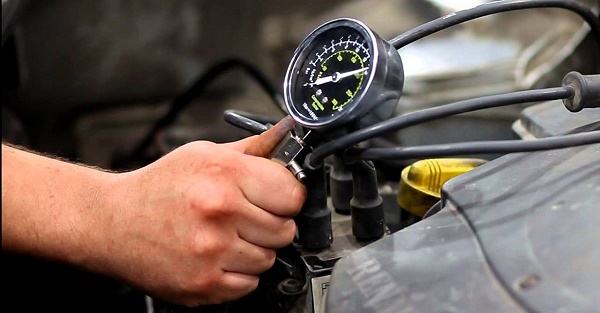
Run auger
The first start of the auger can be done simultaneously with checking the motor or after it. For this, the auger operation switch is switched to the operating mode. In this state, it is necessary to hold it for 5-10 seconds, for which it is necessary to make sure that the rotation is carried out without jerks and in general the screw moves.If this is not the case, it is necessary to adjust the length of its cable.
The same procedure will be required if, after stopping, the auger does not stop completely, but shakes a little. The whole process of adjusting the cable is described in detail in the manual, and it may be different for different manufacturers.
The next important stage in the screw operation is check gear. To do this, lock the auger lever and allow the machine to idle for about 2 hours. After stopping you need to try the gearbox. It should be barely warm or cold, but if it is heated, then there is a defect in it, and the likelihood of an early breakdown is very high.
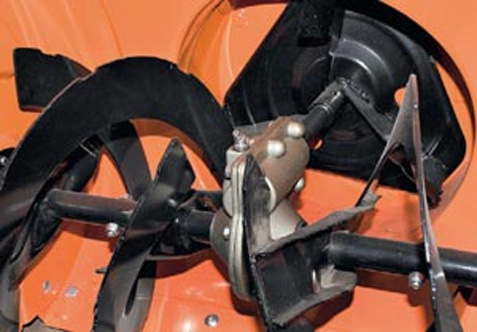
First use on snow
The first snow removal by the snow blower should be carried out on dry flooring not exceeding the diameter of the auger. Before cleaning, wait 2-3 minutes for the device to warm up. The next moment is the direction of the gutter in the right direction. There is an interesting nuance: the snow is thrown forward two times farther than to the sides. After that, you can run the auger and start work. The first time is best to stop after 20 minutes to check the gear again.It should be barely warm or cold. High temperature is a sign of a defect. In this case, the work must stop and return the equipment to the seller.
If the snowblower is working normally, then you can completely clean the area. After the end of the cleaning event, do not immediately turn off the engine and stop the auger. It is recommended to wait 3-5 minutes to let them dry. After that, you can turn off the device.
Regular maintenance of the snowplow
Petrol snow blowers are quite reliable and unpretentious devices. To extend the service life, it is recommended to check the condition of all bolts and fixings once a week, measure the oil level and, if necessary, add it, check the condition of all cables and lubricate them with frost-resistant oils.
Once a month it is necessary to carry out all of the above procedures, as well as look at the state of electrical oxidation terminals and implement candle cleaning. They reflect the condition of the engine: if it is in good condition, the candles are light gray, otherwise a more detailed inspection of the carburetor and the air filter should be carried out. Also once a month it is recommended to re-lubricate the shaft and the auger bearing.
It will not be superfluous to check the backlash of the gearbox and the knock on the auger. A backlash of more than 1 cm indicates wear on the gear, and a knock on the auger is a sign of worn bearings.
Preparation for conservation and after its completion
Preparing a snowblower for storage in the warm season includes a variety of procedures.
- All bolts and nuts must be treated with engine oil. Wash cables with WD-40 liquid.
- The engine must be started and kept on until all the fuel has run out.
- After that, leave the device with open gas tank for a day. At the same time, cover the hole with a clean rag (so that trash doesn’t get inside). Keep a snow blower at this time in a well-ventilated area. During the day, all the gasoline to evaporate, and you can not be afraid of an explosion or a fire of its vapor.
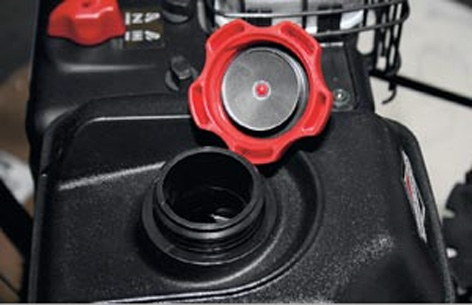
- After carried out the above steps need remove the candles, and in the cylinder pour 10 ml of oil suitable for this engine.
Preparation after the summer is not much different from the first commissioning. In addition to the actions described above, it is recommended to change all friction rings and belts: as practice shows, their service life does not exceed one and a half years. It is also useful to change the oil in the gearbox and engine.

Snow removal recommendations
Long service life and own safety during cleaning requires knowledge of how to use the device on different surfaces, and how to clean snow in its different states.
Cleaning from flat surfaces, for example, asphalt, is carried out at the minimum height of the auger. If the surface is uneven - not rammed gravel, you should set a height equal to the size of the stone.
This possibility is only for self-propelled models, the options with manual transmission are regulated directly by the operator. He needs to raise or vice versa lower the auger above the surface.
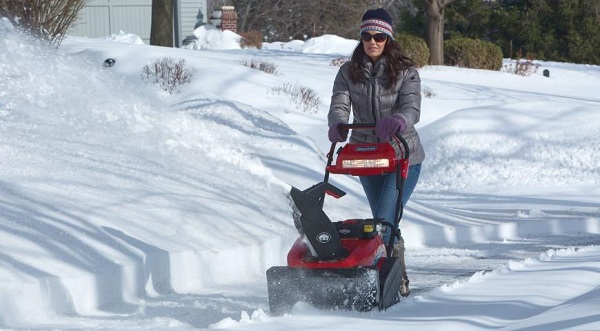
When working on the slopes it is worth remembering that a slope of 5 degrees leads to the fact that the technique slides down a little, and with a slope of more than 20 degrees it can tip over to the side. Therefore, in the presence of a slope, cleaning is carried out up and down along its surface.
Fresh thin snow
If the thickness of the cover does not exceed half of the auger, and the snow has fallen recently, then the cleaning on the self-propelled model can be done at maximum speed. In the case of a drive, the operator should simply choose the optimum speed, but not more than 5 km / h, because otherwise the snow throw distance decreases, and you can slip on the ice if it is hidden under the snow.
Fresh deep snow
If the snow is deep, but has also fallen recently, that is, did not have time to ice up and compose, then the speed of movement should be chosen small. On the self-propelled version is best use second and first gear.
Deep fresh snow is removed in two stages:
- the top layer is removed;
- removed residue.
Here is an important point: you need to remove 20-30 cm of snow (in length) so as not to trample down the one that lies under it. Self-propelled devices can cope with snow, the thickness of which can reach 90 cm, devices with manual transmission are designed for a thickness of no more than two screw diameters.
Snowing
Cleaning wet and ice-covered snow is not very different from cleaning deep fresh snow with the only difference that move very slowly, and moving forward is less than 30 cm at a time. This is necessary in order to reduce the load on the gearbox. If there is ice cover, the machine needs to be lifted above its surface and as if to be poured from above to crush ice with weight and finally grind it with a screw.
When cleaning around the house, avoid places where bushes, stones, curbs or other elevations can be hidden. You can not direct the chute in the direction of the house, as some models throw snow with such force that it can break the window.
Safety
Working with a snow blower can cause serious injury if the safety rules are not followed. Therefore, it is very important to observe the following rules.
- You can work with the device only with good visibility.
- When working should dress for the season and be sure to have shoes with non-slip soles.
- Scarves and loose clothing that may fall into the auger are not recommended.
- You must have eye protection with side shields, as well as ear protection.
- Do not use the snow blower after taking drugs, alcohol or drugs.
- In the cleaning area should not be outsiders and children.
- Before starting work should clear space from unwanted items.
- Do not start and stop on a slope.
- It is not recommended to move your back.
- You should ensure that the wheels of the device always have a support, otherwise there is a risk of tipping over.
- Before starting, the engine should warm up.
- When working on the surface with stones, you need to ensure that the auger is not in contact with them.
- When working, you need to carefully follow the direction of movement in order to stop or change the trajectory when animals or passersby appear.
- Do not use the snow blower when the angle of inclination is more than 20 degrees.
- It is forbidden to increase the speed of movement for a quicker cleaning, it can not only disable the equipment, but also lead to injuries.
How the device is transported
Transportation snowthrower to a new place, as a rule, carried in trailer in view of rather serious dimensions. Not self-propelled models are quite realistic to lift and place in the trailer yourself,but the technique with an independent system of movement is not easy to raise even together. In such a situation it is recommended use the lift, and in the case of its absence, the ladder to roll the snowthrower on the trailer. When transporting, you must carefully fix the equipment, you can not transport, holding hands. On bumps or a turn, a snow blower can easily tip over and pin down the person holding it.
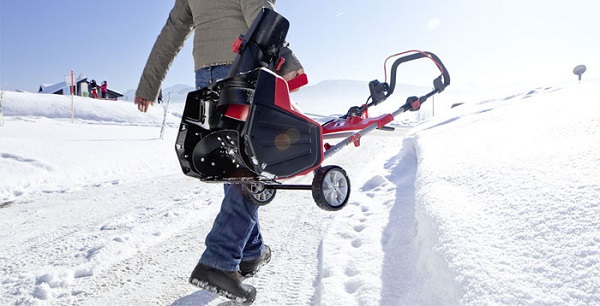
Snow blowers - a technique that makes life easier for owners of country houses and owners of their own sites. In order for the device to serve for a long time, it is necessary to follow the rules of its use and to treat it carefully during storage and in preparation for work. Under such conditions, the snow blower will last more than one year and will not require significant costs.

/rating_off.png)








